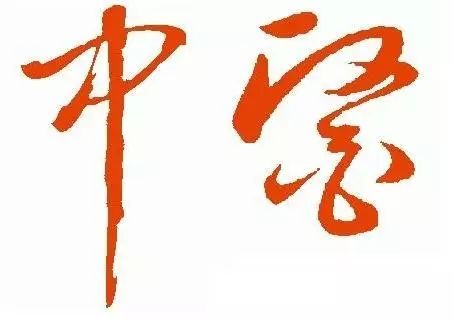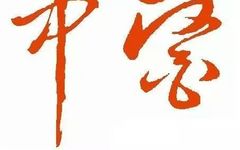Abstract:
• The term “中医” (zhōng yī, Traditional Chinese Medicine) has been in use for nearly 2000 years. The ancient meaning of “中医” dates back approximately 1800 years, referring to its previous existence; the modern meaning of “中医” has been in use for about 160 years, referring to its current existence.
• Before being recorded in history by Ban Gu during the Han Dynasty, “中医” had already been circulating among the people for some time, nearly 2000 years ago, referring to doctors or medical practices of intermediate level.
• In the book “西医略论” (Xī Yī Lüè Lùn, A Brief Discussion of Western Medicine), “中医” refers to Chinese doctors in contrast to Western doctors. The same book also contrasts “中国医士” (Zhōngguó yī shì, Chinese physicians), “中土医士” (Zhōngtǔ yī shì, indigenous physicians), and “西国医士” (Xīguó yī shì, Western physicians), with “中土医学” (Zhōngtǔ yīxué, indigenous medicine) being contrasted with “西医” (Xī yī, Western medicine), the latter already implying the meaning of Traditional Chinese Medicine. The term “中医” as an abbreviation for Traditional Chinese Medicine marks the beginning of a new era in the dual structure of Chinese and Western medicine in our country.
The “Traditional Chinese Medicine Law of the People’s Republic of China” was promulgated on December 25, 2016, and officially implemented on July 1, 2017, marking a significant milestone in the development of Traditional Chinese Medicine. As the law was about to be implemented, many colleagues in the TCM community began to ask the same question: “When was the term ‘中医’ first used?”
In fact, a general term has long existed, and it is widely believed that the term “中医” originated after Western medicine was introduced to China, in contrast to Western medicine. It has been noted that since 2008, more than ten books written by non-TCM historians have stated that the term “中医” truly appeared around the time of the Opium War, when Western doctors from the East India Company named Chinese medicine “中医” to distinguish it from Western medicine. At that time, the name “中医” was used to compare with Western medicine. Thus, to date, no one has clearly reported the earliest time and literature regarding the term “中医” in relation to Western medicine.
Five years ago, Academician Wang Yongyan of the Chinese Academy of Engineering hoped that I could verify the origin of the term “中医”. In 1998, I began to focus on the standardization of terminology in Traditional Chinese Medicine, paying more attention to important terms. The evolution of ancient and modern names not only directly affects the standardization of terminology but is also closely related to the correct understanding of TCM concepts and the modern interpretation of TCM theories. Five years ago, the “Standardization Research of Terminology in Basic Disciplines of Traditional Chinese Medicine” project, led by me, was designated as a key project by the Ministry of Science and Technology, one of whose tasks was to verify key terms as academic support for standardization. This background prompted us to specifically investigate the origins, conceptual connotations, and changes in names of terms such as “中医”. After reviewing a large number of documents, three years ago, we found the answer, but considering that there might still be new discoveries, we hesitated to publish hastily. After three more years of searching, this discovery has not yet been updated. A detailed research report will be published in the upcoming conference journal and academic annual meeting; here, I present a preliminary summary report to share with colleagues, celebrating the implementation of the new law.
In fact, the term “中医” has been in use for nearly 2000 years. The ancient meaning of “中医” dates back approximately 1800 years, referring to its previous existence; the modern meaning of “中医” has been in use for about 160 years, referring to its current existence.
The Past of ‘中医’: 1800 Years

The term “中医” appeared in ancient Chinese literature long before the introduction of Western medicine. The “汉书·艺文志” (Hàn Shū · Yì Wén Zhì, Book of Han: Treatises on Arts and Literature), written in 80 AD, records, “A proverb says: ‘If you have an illness and do not treat it, you will often get a 中医.'” Here, “中医” means a doctor of intermediate level. Proverbs are concise oral expressions widely circulated among the people. It can be seen that “中医” had already been circulating among the populace for some time before being recorded in history by Ban Gu during the Han Dynasty, nearly 2000 years ago. In later literature, it referred to doctors or medical practices of intermediate level, such as in the Tang Dynasty’s “备急千金要方” (Bèi Jí Qiān Jīn Yào Fāng, Essential Prescriptions Worth a Thousand Gold for Emergencies), which states: “The best doctor listens to sounds, the intermediate doctor observes colors, and the inferior doctor diagnoses pulses”; and it was extended to mean ordinary doctors or medical practices, as noted in the Ming Dynasty’s “古今医统大全” (Gǔ Jīn Yī Tǒng Dà Quán, Complete Compendium of Ancient and Modern Medicine) (1556), which states: “If the stomach qi is full, even if there is illness, it will heal itself without treatment, thus the intermediate doctor’s use of medicine is also effective.” Since the modern meaning of “中医” emerged, the ancient meaning has gradually fallen out of use and can generally only be found in ancient literature.
The Present of ‘中医’: 160 Years

Existing research indicates that Western medicine in its modern sense was introduced to China around the mid-16th century, approximately 360 years ago. In the first two centuries after the introduction of Western medicine, there was no distinction in naming between Chinese and Western medicine. It was not until 1857, when British missionary doctor Benjamin Hobson published “西医略论” (Xī Yī Lüè Lùn, A Brief Discussion of Western Medicine) in Shanghai, that the modern existence of “中医” began.
“西医略论” is the first medical work named “Western Medicine” and is also the earliest known literature to use the term “中医” to refer to Chinese indigenous medicine. The book states: “Attached are illustrations of saws and amputations, which are commonly used in Western countries and must be included; lest 中医 be unable to imitate them at the time, I will not elaborate.” Here, “中医” refers to Chinese doctors in contrast to Western doctors. The book also contrasts “中国医士” (Zhōngguó yī shì, Chinese physicians), “中土医士” (Zhōngtǔ yī shì, indigenous physicians), and “西国医士” (Xīguó yī shì, Western physicians), with “中土医学” (Zhōngtǔ yīxué, indigenous medicine) being contrasted with “西医” (Xī yī, Western medicine), the latter already implying the meaning of Traditional Chinese Medicine. Research indicates that when Hobson translated Western medical texts, he used his own oral descriptions and collaborated with Chinese individuals for assistance in translation or refinement. This model of collaboration in translating Western works was not uncommon at the time, and it employed a domestication translation method, selecting existing Chinese vocabulary as professional terminology. For example, Western medicine adopted TCM terms such as heart, liver, lung, kidney, and hygiene, which inevitably differed from their original meanings, while terms like spleen and cholera were borrowed by Western medicine, diverging significantly in meaning. When “西医略论” was published, it was titled “Written by British physician Benjamin Hobson, co-authored by Jiangning scholar Guan Maocai,” indicating that a scholar named Guan from Nanjing participated in the translation. The result was that this book was the first to use “中医” to refer to Chinese indigenous medicine, in contrast to the imported Western medicine. As for who first proposed the term, historical records are lacking. However, given the familiarity with Chinese vocabulary, it is more likely that the term “中医” was proposed by the Chinese scholar Guan and then approved by Hobson.
Subsequently, more and more physicians began to use the term “中医”, especially in comparisons with Western medicine. For example, in 1881, Luo Dingchang’s book “中西医粹” (Zhōng Xī Yī Cuì, Essence of Chinese and Western Medicine) used the term “中西医” together; in 1884, Tang Rongchuan’s “中西汇通医经精义” (Zhōng Xī Huì Tōng Yī Jīng Jīng Yì, Essentials of the Medical Classics of Chinese and Western Medicine) stated: “When Western medicine first emerged, it was not yet fully developed; Chinese medicine has followed errors and is often incorrect. Therefore, I have extracted the essentials from various classics and explained them, combining Chinese and Western medicine without regard to territorial differences, but seeking to reconcile them into one truth.” It can be seen that in the 1880s, the terms “中医” and “西医” began to become part of the discourse in the TCM academic community. The term “中医” as an abbreviation for Traditional Chinese Medicine marks the beginning of a new era in the dual structure of Chinese and Western medicine in our country.
Author: Zhu Jianping Institute of Chinese Medical History and Literature, China Academy of Chinese Medical Sciences
New Media Editor: Zhu Luyun
Content Cooperation: 010-84249009 ext. 6305
Or add WeChat 251693518
Business Cooperation: 18500879979
WeChat Submission Email:[email protected]
(Articles focus on viewpoints, policies, academic discussions, and TCM culture, and must be original for first publication. Please leave your name, organization, and contact information in the email.)
Copyright Statement: This article is original to “China Traditional Chinese Medicine News” (WeChat ID: cntcm1989) and may not be reproduced without authorization. Click the lower left corner “Read the Original” to obtain authorization.

